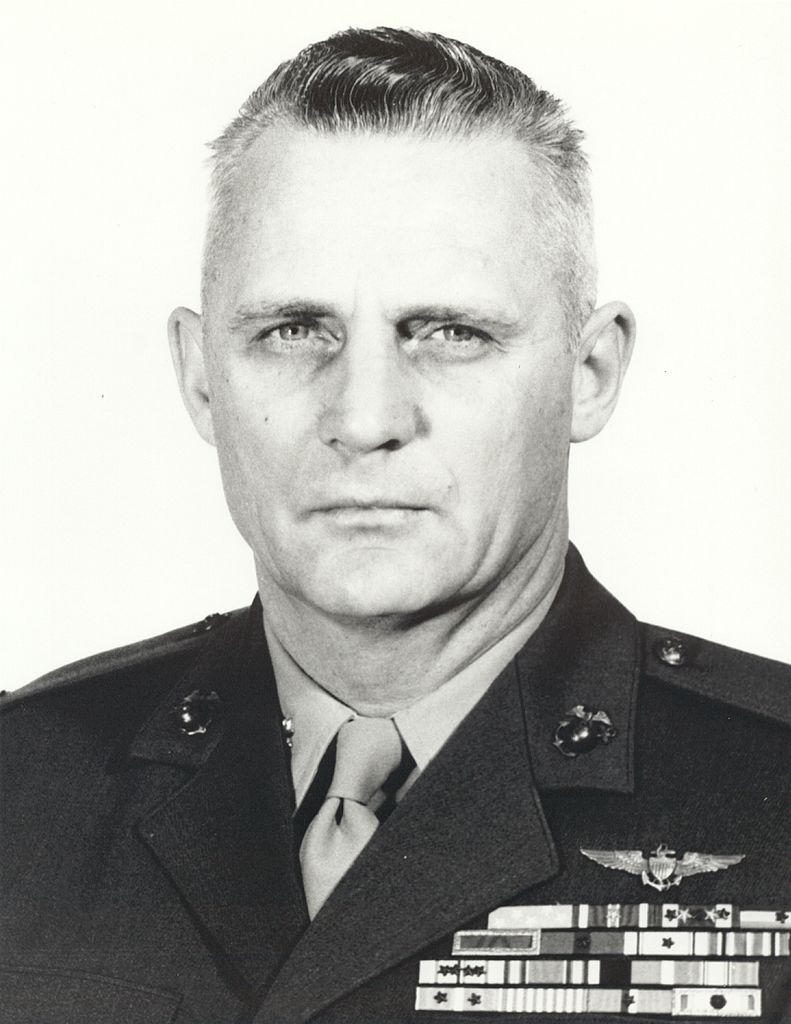The US Navy created the F4U Corsair as a carrier-based fighter, but there was no immediate plan to give it to the Marines
Nothing more represented Marine fighter aviation during World War II than the Vought F4U-1 Corsair, which would eventually replace the F4F Wildcat as the preferred aircraft of Marine fighting squadrons.
According to Bill Yenne’s narrative in America’s Few, Marine Aces of the South Pacific, Corsair’s entry into the South Pacific Area (SOPAC) did not follow a meticulous plan but rather happened practically by accident. The Marines were not meant to be the first to engage in combat with the remarkable new Corsair, just as they were not meant to be the first line of air defense in the South Pacific in the first place.
The US Navy created the aircraft as a carrier-based fighter with no imminent plans to give it to the Marines.
On aircraft carriers, Corsair’s enlarged nose made takeoff and landing difficult because it reduced forward visibility. The Corsair’s plans drastically shifted at this point. The Corsair, which was the most promising aircraft in every other way, was given to the Marines after the US Navy made the decision late in 1942 to limit the aircraft to land-based operations while techniques for carrier operations were developed.
The later F4U-1A and F4U-1D Corsair versions, which replaced the original F4U-1’s faceted “birdcage” canopy with a one-piece “blown Plexiglas” bubble canopy that had significantly improved view, eventually addressed the previous Corsairs’ poor visibility.
The Bent-Wing Bird proved to be the appropriate aircraft at the appropriate time when serving with the Marines in the Solomons. It was fast; the second American fighter (after the USAAF’s P-38 Lightning) to be capable of traveling at speeds higher than 400 mph, it was about 100 mph faster than the Wildcat and about twice as fast as a Zero.
Moreover, it possessed a range that was twice as big as the Wildcat, considerably increasing the operational range of Marine aviators in the Solomons. The Corsair, in contrast to the Wildcat, had the range to conduct combat missions all the way to Bougainville to engage the Zeros there at the top of the Slot.
Major William Gise commanded the VMF-124, the first active Corsair squadron. On February 12, 1943, they arrived at Kukum Field (“Fighter 2”) inside the Henderson Field complex, and the same day, they flew their first mission, escorting a search and rescue PBY. The Corsairs and VMF-124 faced their baptism of fire over the course of the following two days, but things did not go as planned. They were involved in the “St. Valentine’s Day Massacre,” which became famous in the records of SOPAC air operations.

Japanese losses were minimal, maybe as low as two, compared to American losses of 15 aircraft, including two Corsairs, during the sorties of February 13 and 14. Although the enemy may have left Guadalcanal, they were still a formidable force in the Solomons. VMF-124 gradually assessed how to take advantage of Corsair’s advantages in combat with the Zeros.
The Marine aviators on Guadalcanal had frustratingly little contact with the enemy up until April 1st. Air-to-air combat possibilities were less frequent during operations from the spring of 1943 compared to the almost daily contacts that occurred in the fall of 1942.
The first “Corsair ace,” Kenneth Ambrose Walsh of VMF-124, achieved his first aerial victories on April 1. The Imperial Japanese Navy Air Force (IJNAF) returned to the offensive in a major way on this day. The operation known as I-Go Sakusen, a two-week air onslaught against Allied positions from New Guinea to Guadalcanal, was started by Fleet Admiral Isoroku Yamamoto, commander of the IJN Combined Fleet and the man responsible for the attack on Pearl Harbor.
On April 1st, Ken Walsh was in the air commanding a VMF-124 flight on a combat air patrol mission over the Russell Islands, prepared to halt an approaching IJNAF strike force.
Zeros attacked a flight of USAAF P-38s because they were blind to the VMF-124 Corsairs flying over them. Walsh directed his flight in a diving attack that brought down two adversary fighters. On May 13, he added three more in a subsequent round of battle, making the one-time “flying private” the first Corsair ace. These were only the first chapters of amazing tales for both Walsh and the Corsair.
America’s Few, Marine Aces of the South Pacific is published by Osprey Publishing and is available to order here.
Photo by U.S. Navy and U.S. Marine Corps


